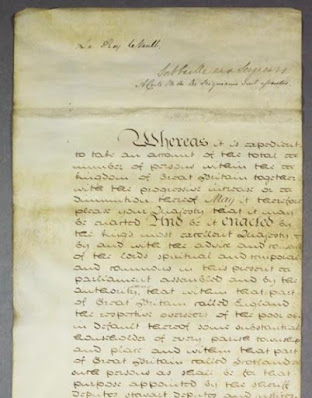Finding places that no longer exist
Places change their names! I know, its confusing, and downright inconvenient and sometimes even whole countries do it! Street name changes are the worst, and very difficult to find.
I have several places or locations in my family history where a town or suburb has changed it's name. So here are my top tips on finding locations that do not seem to exist anymore.
1. Firstly, don't just trust a google maps search for a location. If you search for Sandhurst Victoria you will find a suburb called that TODAY. But the Sandhurst of 1855 was in quite another place.
2. Try a name and date search. Try searching (google) something like "Sandhurst 1855", you are more likely find a document about a change of name.
3. Look in documents for clues about the area. One of my family came from South Creek, NSW, but looking at other documents they mention St Marys. A bit of digging found that South Creek runs through St Marys, NSW; the settlement was probably called South Creek in the 1800's. Try narrowing down using the next largest town.
4. Check for government geographical name boards, mapping agencies or registers. NSW has one for example. (check my pinterest maps board for hints). Try looking for a department of land or land titles in the state or county you are after.
5. Government Gazettes. In Australia most changes of name are listed in Government Gazettes, available on Ancestry.
6. Wikipedia has a limited list that could assist.
7. Local knowledge can be useful, particularly for street or building names. Try the local family history society in the area you are looking at.
8. Be aware of language changes. India is a good example of this, where the renaming of cities in India started in 1947 following the end of the British imperial period. If this is the case with the country you are researching, try wikipedia first, then search "renaming towns in {country}". Germany also had a lot of town name changes, and this site will help.
9. Try a country map or atlas for the decade you are researching. For instance, look for a map of England in 1880, you will be surprised how many there are. You can also try the county or state, eg. Kent in 1880.
10. Gazetteers - search for a gazeteer or the country or area you are researching. A Gazeteer is a geographical dictionary. They typically contain information concerning the geographical makeup, social statistics and physical features of a country, region, or continent.
11. Newspapers of the time may give you clues that just may help you find a location.
Still looking for an old map online? Take a read of this article on Family Search, it could help point you in the right direction.
I have several places or locations in my family history where a town or suburb has changed it's name. So here are my top tips on finding locations that do not seem to exist anymore.
1. Firstly, don't just trust a google maps search for a location. If you search for Sandhurst Victoria you will find a suburb called that TODAY. But the Sandhurst of 1855 was in quite another place.
2. Try a name and date search. Try searching (google) something like "Sandhurst 1855", you are more likely find a document about a change of name.
3. Look in documents for clues about the area. One of my family came from South Creek, NSW, but looking at other documents they mention St Marys. A bit of digging found that South Creek runs through St Marys, NSW; the settlement was probably called South Creek in the 1800's. Try narrowing down using the next largest town.
4. Check for government geographical name boards, mapping agencies or registers. NSW has one for example. (check my pinterest maps board for hints). Try looking for a department of land or land titles in the state or county you are after.
5. Government Gazettes. In Australia most changes of name are listed in Government Gazettes, available on Ancestry.
6. Wikipedia has a limited list that could assist.
7. Local knowledge can be useful, particularly for street or building names. Try the local family history society in the area you are looking at.
8. Be aware of language changes. India is a good example of this, where the renaming of cities in India started in 1947 following the end of the British imperial period. If this is the case with the country you are researching, try wikipedia first, then search "renaming towns in {country}". Germany also had a lot of town name changes, and this site will help.
9. Try a country map or atlas for the decade you are researching. For instance, look for a map of England in 1880, you will be surprised how many there are. You can also try the county or state, eg. Kent in 1880.
10. Gazetteers - search for a gazeteer or the country or area you are researching. A Gazeteer is a geographical dictionary. They typically contain information concerning the geographical makeup, social statistics and physical features of a country, region, or continent.
11. Newspapers of the time may give you clues that just may help you find a location.
Still looking for an old map online? Take a read of this article on Family Search, it could help point you in the right direction.
 |
| From National Library of Australia - an 1886 book of maps. |




Comments
Post a Comment
Thank you for your comment on my Blog. I love to get feedback and information to share from my readers.
To keep up to date simply follow me on facebook or subscribe using the button at the top of the blog page.
Barb